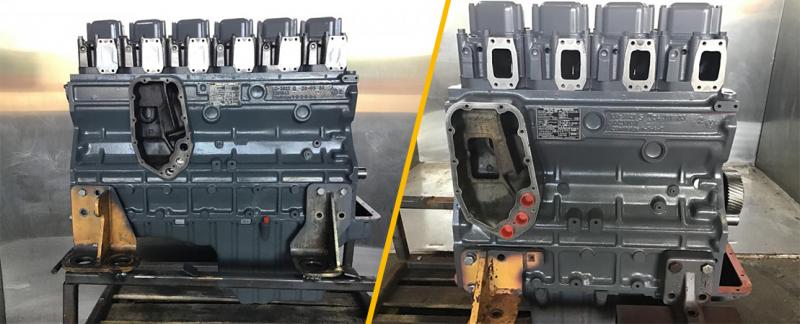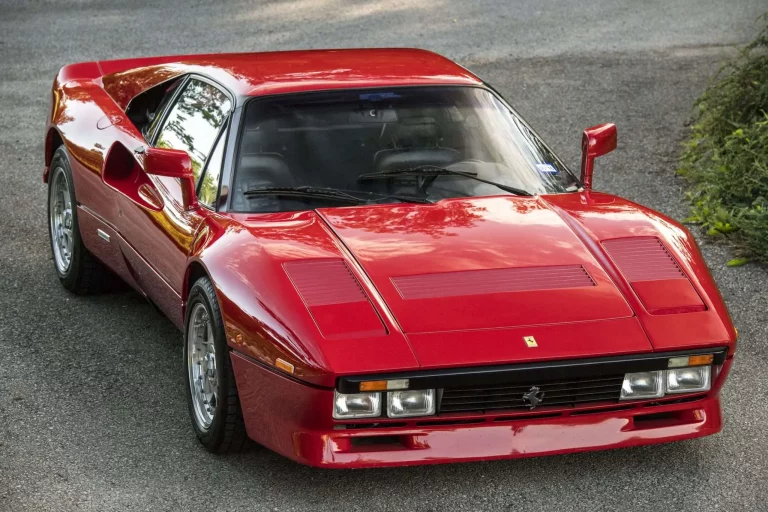Difference Between Long Block Vs Short Block Engines
When talking about car engines, you might hear the terms “long block” and “short block.” These terms describe how complete an engine is when you get it. A long block engine comes with more parts already attached, making it almost ready to go. On the other hand, a short block engine has just the basic components and needs more parts before it can run. In this post, we’ll break down the differences between long block and short block engines, helping you understand which might be right for your needs.

Long Block Vs Short Block Engine: A Detailed Comparision
Here’s a detailed comparison to help you distinguish between a long block and a short block engine, and decide which suits your needs best.
1. Component Inclusion

-
Short Block Engine: Includes the engine block, crankshaft, connecting rods, pistons, and bearings. It comprises just the lower portion of the engine. This setup is ideal for those who plan to customize the top half of the engine to specific preferences, such as performance enhancements or specific project requirements.
-
Long Block Engine: Contains all the components of a short block, plus the cylinder heads, camshaft, and valve train. Sometimes it also includes the timing cover, oil pump, and oil pan. This more complete assembly is advantageous for those looking to streamline the engine installation process, as it reduces the number of steps and complexity involved in engine rebuilding.
2. Assembly and Installation

-
Short Block Engine: Requires additional assembly of the upper engine components like the heads, camshaft, and sometimes even the oil pan and oil pump. This means more hands-on work and a deeper level of technical expertise, which can be a boon for custom builders or enthusiasts who enjoy tailoring their engines to specific performance metrics.
-
Long Block Engine: Arrives with the most critical components pre-assembled, minimizing the amount of work required to get the engine running. This is particularly beneficial for less experienced mechanics or those with limited time, as it simplifies the overall process and reduces the chance of installation errors.
3. Cost and Budget Impact

-
Short Block Engine: Generally less expensive upfront due to fewer components, but additional costs will be incurred purchasing and installing the rest of the necessary parts. This could potentially lead to higher overall expenses depending on the choice of components and the necessity of professional assistance for assembly.
-
Long Block Engine: More expensive initially because it’s more complete, but potentially more cost-effective when considering the time and additional parts needed for assembly. The long block’s higher upfront cost may be offset by reduced labor costs and the reduced risk of purchasing incompatible or suboptimal additional parts.
4. Customization Potential
-
Short Block Engine: Ideal for custom builds or specific performance enhancements, as it allows for the selection and installation of custom heads, camshafts, and other upper engine parts. This flexibility is perfect for racing applications or specialized automotive projects where specific performance characteristics are desired.
-
Long Block Engine: Offers less flexibility for customization since many components are already installed, which might not align with specific performance upgrades. However, it provides a reliable, tested base for those who prefer a more straightforward replacement or are focused on general use rather than customization.
5. Risk and Reliability

-
Short Block Engine: Higher potential for assembly errors as more components need to be installed by the buyer. This requires a solid understanding of engine mechanics to ensure all parts are compatible and correctly installed. However, for those with the necessary skills, it allows for a detailed inspection and customization of each part of the engine assembly.
-
Long Block Engine: Since the critical components are pre-installed and tested by the manufacturer, there’s a reduced risk of errors during assembly, leading to potentially higher reliability out of the box. This can be particularly appealing for commercial applications or when downtime must be minimized.
Frequently Asked Questions
What is a long block engine?
A long block engine is a pre-assembled engine that includes essential parts like the cylinder head and sometimes the camshaft plus rocker arms. It’s an excellent choice for individuals with limited mechanical knowledge or time constraints.
What is a short block engine?
A short block engine provides the basic structure of the engine, allowing for customization through a selection of individual components. It requires a higher level of mechanical knowledge and time commitment than a long block engine.
Is the 6.4 hemi a big block?
Yes, 6.4L HEMI truck engines are considered “big block” engines. The big block designation comes from a thicker block used across the entire 6.4L HEMI platform, also known as BGE (Big Gas Engine).
Does the Chevy 5.7 fall under the category of a big block?
The Chevy 5.7, which debuted in 1958, is indeed considered a big block. Big block engines have larger displacements, with Chevy’s aftermarket crate engines even exceeding 500 cu in.
Is a long block engine better than a short block?
It’s not a matter of better or worse, but rather what suits a person’s needs. A long block engine is more expensive but offers convenience and may save money on upgraded components. A short block engine, while less expensive, demands more time and skill to build.
How does a short block differ from a big block engine?
Short block engines are generally smaller and less powerful than big block engines. However, this makes them less expensive and easier to maintain, while big blocks offer more power and torque.

Hi! I’m Larry Gibbs, studying mechanical engineering with a focus on cars. I really love Ferraris and write blog posts about the latest car stuff. When not studying or blogging, I’m usually on a road trip exploring new places. I also enjoy playing football and watching movies. Life’s an adventure, and I’m all about enjoying the ride!

![Top 10 Cheapest Lamborghini In 2024 [New & Used]](https://www.experienceferrari.com/wp-content/uploads/2024/05/636088_1675947870778_1679033820791_1679033820791-768x432.webp)




